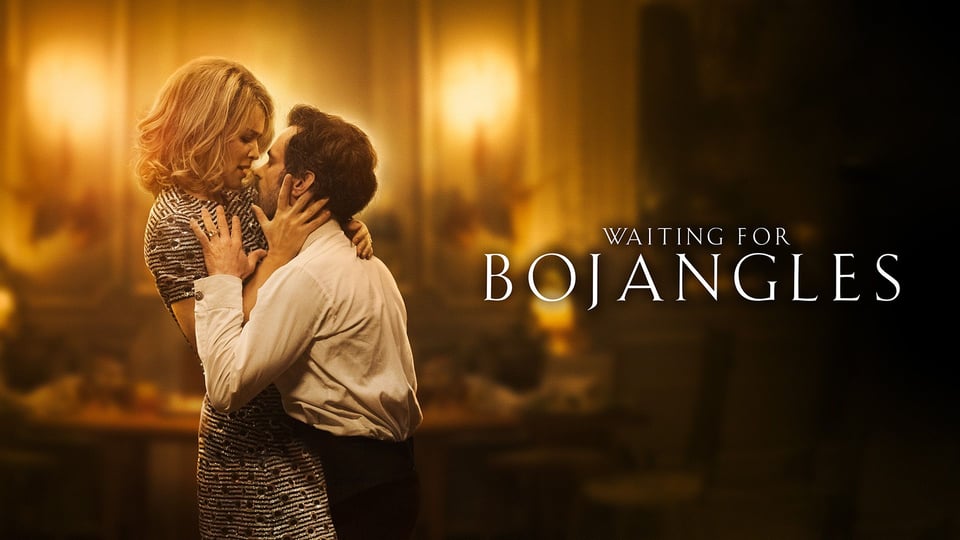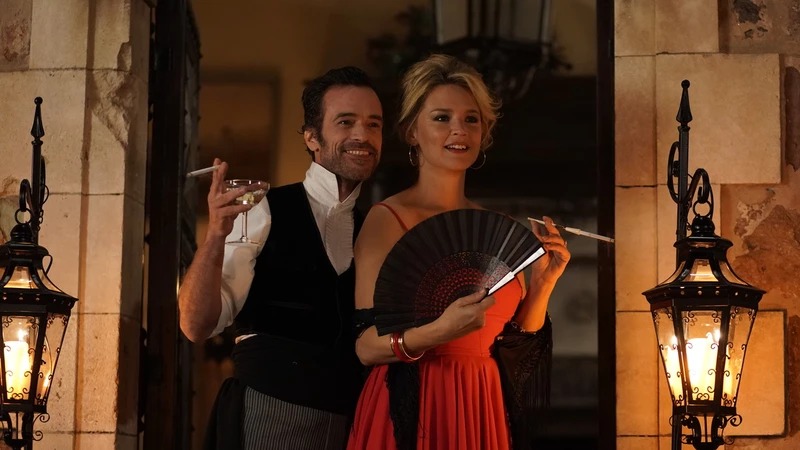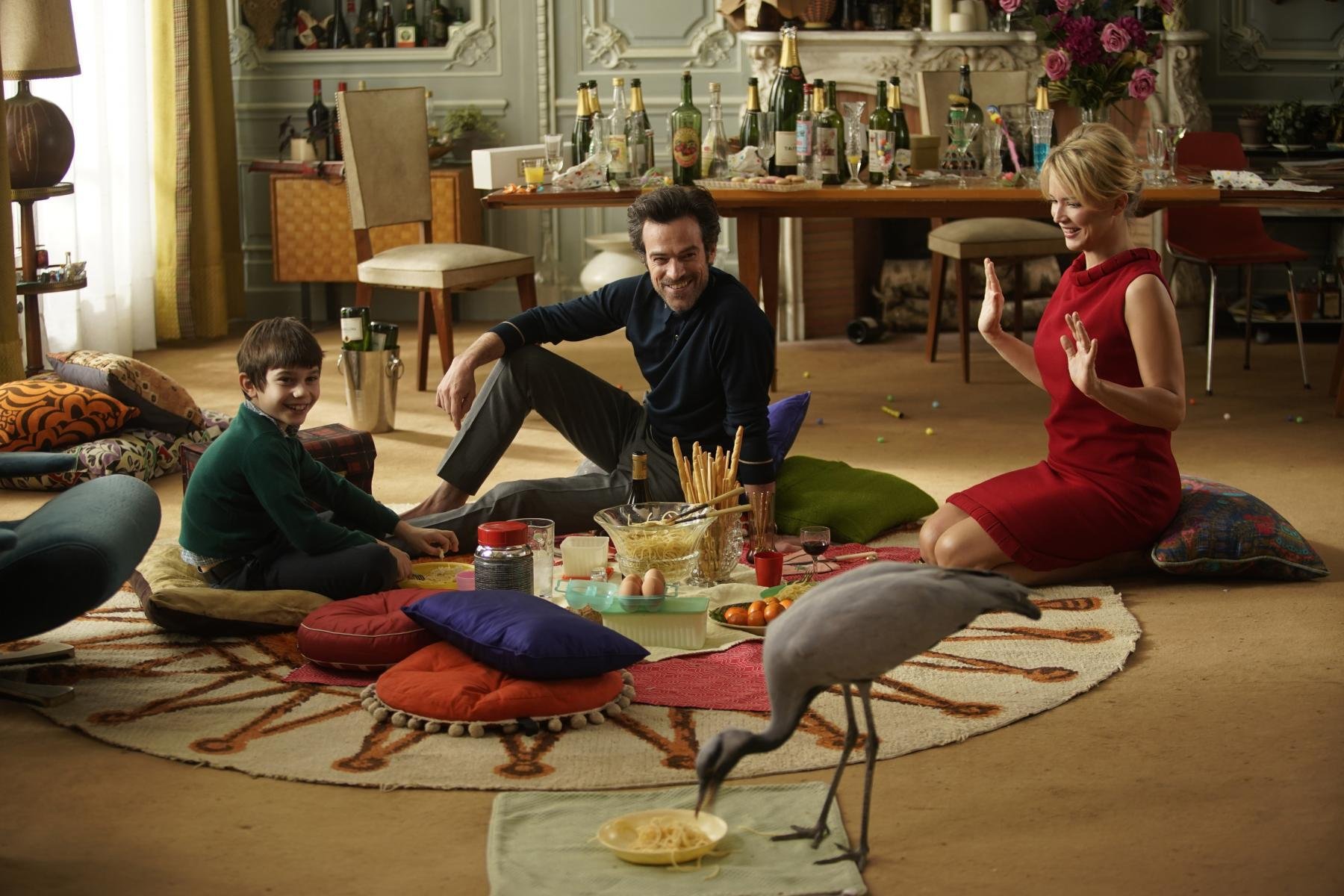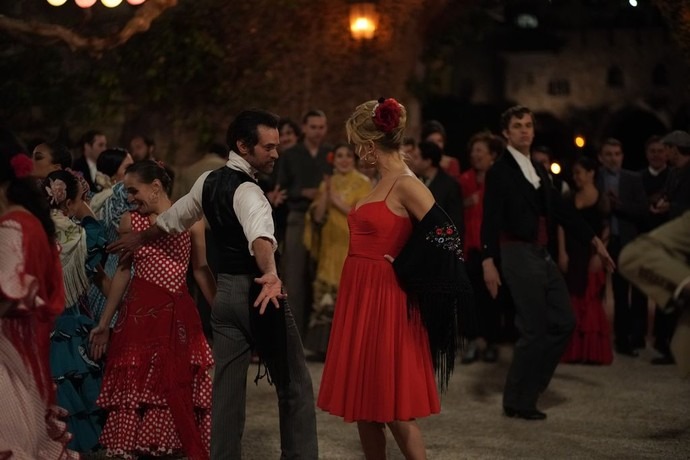Waiting for Bojangles (2021)

Waiting for Bojangles is a 2021 French-Belgian romantic drama directed by Régis Roinsard, based on the novel of the same name by Olivier Bourdeaut. The film stars Romain Duris, Virginie Efira, and Grégory Gadebois, and it beautifully captures the essence of love, madness, and the fleeting nature of life. The story is set against the backdrop of Paris and follows an eccentric family that finds joy in their unconventional, whimsical life. Through its unique blend of romance and sadness, the film tells a poignant story of a man reflecting on his love for his wife, who has slowly lost herself to mental illness.
The film tells the story of the narrator, who reflects on his life growing up with his parents, particularly his relationship with his mother, who is an exuberant, free-spirited woman named Camille (played by Virginie Efira). She and her husband, Georges (Romain Duris), lead a wild and carefree life, indulging in spontaneous dancing and living in the moment. The title Waiting for Bojangles refers to their shared love for the legendary musician, Bojangles, symbolizing their love for music, freedom, and joy. However, as Camille’s mental health begins to deteriorate, the family is forced to navigate the heartbreaking shift from carefree bliss to the sorrowful reality of losing a loved one to illness.
At the heart of Waiting for Bojangles is a celebration of love, albeit an unconventional and often chaotic one. Georges’ unwavering love for Camille is a central theme, and his commitment to her, despite her deteriorating mental state, highlights the devotion that can exist within relationships. The film portrays how love can be both a source of joy and pain, with moments of happiness tempered by the looming shadow of Camille’s illness. As Georges tries to hold on to their once carefree life, he learns to cope with the uncertainty and fragility of their situation. The film’s exploration of love in the face of mental illness adds an emotional depth to the story, evoking both empathy and sorrow.
The performances in Waiting for Bojangles are one of the film’s strongest aspects. Romain Duris portrays Georges with sensitivity and warmth, capturing the complexity of his character as he struggles to reconcile his love for Camille with the painful reality of her condition. Virginie Efira’s portrayal of Camille is both captivating and heartbreaking, as she brings the character’s vibrancy and fragility to life. The chemistry between Duris and Efira is palpable, making their love story feel authentic and deeply emotional. Grégory Gadebois also delivers a standout performance as the narrator, whose perspective offers a glimpse into the inner workings of the family’s unique dynamics.

Régis Roinsard’s direction of Waiting for Bojangles is both whimsical and tender, capturing the emotional highs and lows of the story with nuance and sensitivity. The film’s visual style, characterized by soft lighting, vibrant colors, and dreamlike sequences, mirrors the carefree spirit of Georges and Camille’s early relationship. However, as the narrative turns more somber, the tone shifts, reflecting the emotional weight of the story. Roinsard uses symbolism and visual motifs, such as the recurring references to Bojangles’ music and the imagery of dancing, to convey the film’s themes of love, freedom, and inevitable loss. The film’s pacing, although slow at times, allows for deep emotional reflection and enhances its introspective quality.

Upon its release, Waiting for Bojangles was met with positive reviews, particularly for its performances and the emotional depth of the story. Critics praised the film’s ability to balance lighthearted moments with poignant sadness, creating a rich emotional experience for viewers. While some felt that the film could have explored Camille’s mental illness in greater detail, others appreciated the focus on the emotional journey of the family rather than simply the diagnosis. The film resonated with audiences who appreciated its tender portrayal of love and the complexities of mental health, as well as its exploration of loss and acceptance.

In conclusion, Waiting for Bojangles is a beautifully crafted film that delves into the themes of love, mental illness, and the passage of time. Through heartfelt performances and thoughtful direction, the film captures the bittersweet nature of life and relationships, showing that love is not always perfect but is worth cherishing despite its imperfections. Georges and Camille’s story is one of devotion, joy, and eventual heartbreak, reminding viewers of the importance of living in the moment and cherishing those we love. Waiting for Bojangles is an emotional journey that lingers long after the credits roll, making it a poignant and unforgettable cinematic experience.











